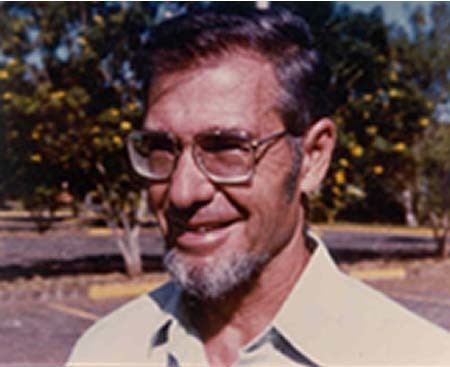Role American priest Title Father | Religion Catholic Residence Honduras Name James Carney | |
 | ||
Cause of death during an insurgency operation in Honduras Nationality American, later Honduran Other names Father J. Guadalupe Carney Books To be a Revolutionary: An Autobiography | ||
James Francis Carney (1924−1983) was an American missionary who ministered to peasants and left-wing insurgents in Honduras before being killed in that country's armed conflict in 1983.
Contents
Life
Carney was born in Chicago to parents of German and Irish ancestry. His father was a salesman for the Burroughs Adding Machine Corporation, and the family moved around frequently. They were also devoted listeners of Father Charles Coughlin's radio show. Carney graduated from St. Louis University High School in Missouri in 1942, and went on to Saint Louis University on a football scholarship. Despite poor vision and a football-related knee injury, he was drafted and saw service in the European Theatre of World War II as a combat engineer and military policeman. After the war, he took advantage of the G.I. Bill to return to SLU to study theology, then transferred to the University of Detroit the following year before finally ending up at St. Stanislaus Seminary in Florissant, Missouri in 1948. He spent three years as a missionary in British Honduras (today Belize) beginning in 1955 before returning to the United States to study at St. Mary's College in Kansas.
After being ordained into the Jesuit order in 1961, Carney was sent to work with impoverished Hondurans by the Missouri Province of the Society of Jesus. He eventually naturalized as a Honduran citizen and renounced U.S. citizenship. Nevertheless, he was expelled to Nicaragua by the Honduran government in 1979. In Nicaragua, he ministered to members of the Revolutionary Party of Central American Workers (PRTC). He eventually became chaplain to a group of PRTC fighters and returned with them to Honduras in 1983.
Death
According to PRTC deserters, morale in the group sagged as the insurgents traveled through mountainous terrain and ran low on supplies. Carney clashed with the group's commander over the treatment of his subordinates and deserted from the group after being prohibited from performing mass.
U.S embassy documents, citing interviews with PRTC deserters suggest that, as the Honduran military closed in on the group, Carney was unable to keep up with the insurgents and retired to a hammock where he starved to death.
This version of events is contradicted by testimony by exiled former intelligence officer Florencio Cabadero who claims that Carney was captured, tortured, and then thrown to his death from a helicopter by members of the Honduran Army's elite Battalion 316. Eric Haney, who was stationed in Honduras as a member of the Delta Force at the time, reported hearing that Carney was tortured and killed by the military. In his book Inside Delta Force, Haney claims credit for killing former Green Beret David Arturo Baez in the final firefight that saw Carney captured (The Battle of Yolo Valley, Honduras). Since the publication of his book and claim Haney has been roundly admonished by the U.S. Special Forces community for fabricating the story of his killing Baez.
Yet another report claims that Baez and Carney were taken alive by Honduran forces.
However, sources at the U.S. embassy in Honduras have since offered that Carney, along with Baez, a Nicaraguan-American Sandinista serving as a military adviser to the guerrilla column, was captured. Both he and Baez were interrogated at a small dirt landing strip in Honduras along with surviving members of the column. As with the capture and execution of Che Guevara by Bolivian Rangers on October 9, 1967, both Carney and Baez were ordered to be executed by the country's government or military. According to U.S. MilGrp officers then stationed in Honduras the execution of Baez and Carney is alleged to have been carried out by the first Honduran Special Forces officer to have graduated the U.S. Special Warfare course at Fort Bragg, North Carolina. The order from the Honduran military commander was that "all officers are to have blood on their hands" in order to ensure silence.
The bodies of the two Americans were, along with those others killed, flown back over the border on a Honduran military helicopter into Nicaragua and unceremoniously dumped into the triple canopy jungle below.
Aftermath
Carney's family traveled to Honduras shortly after learning of his death, but were unable to recover his body or any information. Baez's family, living in Florida, have long demanded the truth about the former Green Beret's death.
Later in 1983, the army officer implicated by Cabadero in ordering Carney's death, General Gustavo Álvarez Martínez, was awarded the Legion of Merit by President Ronald Reagan, "for promoting democracy in Honduras". Some of Carney's former colleagues believe the award is evidence that then U.S Ambassador to Honduras John Negroponte authorized Carney's killing. However, there is no evidence Negroponte was aware of the two captured Americans with only the embassy's MILGRP senior staff advised of the battle and its aftermath in real time.
Father Joseph Mulligan, a close friend of Carney's, has been searching for answers to the disappearance of both Carney and Baez for over 20 years. In 2010, he sent a letter to President Barack Obama and Secretary of State Hillary Clinton requesting their assistance in seeing his FOIA request, now being processed, approved.
